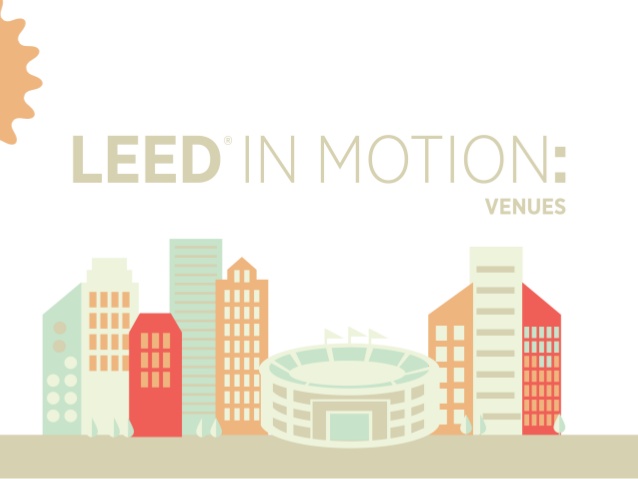The U.S. Green Building Council released its LEED in Motion: Venues report, which highlights the efforts of convention centers, sports venues, performing arts centers, community centers and public assembly spaces to transform their environmental, social and economic footprint through LEED certification. The report showcases some of the most impressive green venues around the world.
“The scope and scale of the venues industry is enormous, and the leaders creating these spaces have an important role to play in reducing environmental impact,” said Mahesh Ramanujam, president & CEO of USGBC. “By incorporating green practices, venues around the world are positively impacting their triple bottom line – people, planet, profit – while inspiring and educating others to be proactive in the areas of social responsibility and sustainability.”
Venues are large contributors to the U.S. economy. The U.S. Bureau of Labor Statistics reports that the number of conventions and events is expected to expand by 44 percent from 2010 to 2020 – far outpacing the average projected growth of other industries. Annually, the top 200 stadiums in the U.S. alone draw roughly 181 million visitors, and roughly 60 million people worldwide attend a consumer or industry trade show. Waste Management estimates that the NFL, MLB, NBA and NHL generate a combined 35,000 metric tons of CO2 each year from their fans’ waste. The convention and trade show industry, one of the largest global contributors to waste, produces an estimated 60,000 tons of garbage each year.
Venues that incorporate LEED (Leadership in Energy and Environmental Design), the world’s most widely used green building rating system, into their buildings enjoy increased cost-savings, decreased annual operating costs and a higher return on investment overall. According to the 2015 Green Building Economic Impact Study, from 2015-2018, it is estimated that LEED-certified buildings in the U.S. will have saved more than $2.1 billion in combined energy, water, maintenance and waste savings.
The report highlights the green strategies and savings of more than 30 LEED-certified venues across the globe, including Orlando Magic’s Amway Center, the first NBA arena to earn LEED Gold certification using the LEED Building Design + Construction: New Construction rating system, was able to save nearly a million a year, including close to $700,000 in annual energy costs alone because of LEED certification.
At one of the most renowned regional theaters in the country, The Old Globe’s 108,000 square foot complex in San Diego, green strategies were implemented so as not to disrupt the buildings’ aesthetics and primary focus on performance. Low-flow fixtures and aerators reduced overall water usage by 32 percent, LED retrofits and timer installations resulted in savings of more than 14,000 kilowatt hours per year, and an increase of recycling bins and staff education created the potential for more waste diversion.
Image: Cover of LEED in Motion Report, courtesy of the U.S. Green Building Council









